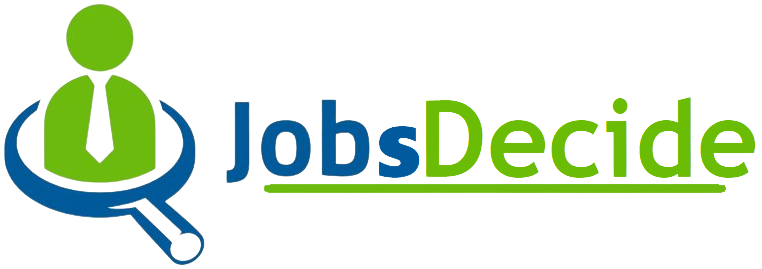(1) Books of original entry are called:
(a) Ledger
(b) Work sheets
(c) Journal
(d) None of these
(2) For preparing balance sheets prepaid expenses are shown as part of:
(a) Liability
(b) Equities
(c) Assets
(d) None of these
(3) Unpaid and unrecorded expenses are called:
(a) Prepaid expenses
(b) Accrued expenses
(c) Additional expenses
(d) None of these
(4) Amount, cash, or other assets removed from business by owner is:
(a) Capital
(b) Drawings
(c) Assets
(d) None of these
(5) Under the diminishing balance method, depreciation amount is:
(a) Payment
(b) Receipt
(c) Expenditure
(d) None of these
(6) Users of accounting information include:
(a) The tax authorities
(b) Investors
(c) Creditors
(d) All of these
(7) The business form(s) in which the owner(s) is (are) personally liable is (are) the:
(a) Partnership only
(b) Proprietorship
(c) Corporation only
(d) Partnership and proprietorship
(e) None of these
(8) The investment of personal assets by the owner:
(a) Increases total assets and increases owner’s equity
(b) Increases total assets only
(c) Has no effect on assets but increases owner’s equity
(d) Increase assets and liabilities
(e) None of these
(9) All of the following are forms of organizations except:
(a) Proprietorship
(b) Corporation
(c) Retailer
(d) Partnership
(e) None of these
(10) Economic resources of a business that are expected to be of benefit in the future are referred to as:
(a) Liabilities
(b) Owner’s equity
(c) Withdrawals
(d) Assets
(e) None of these
(11) An owner investment of land into the business would:
(a) Decrease withdrawals
(b) Increase liabilities
(c) Increase owner’s equity
(d) Decrease assets
(e) None of these
(12) A cash purchase of supplies would:
(a) Decrease owner’s equity
(b) Increase liabilities
(c) Have no effect on total assets
(d) None of these
(13) An owner investment of each into the business would:
(a) Increase assets
(b) Decrease liabilities
(c) Increase withdrawals
(d) Decrease owner’s equity
(e) None of these
(14) The payment of rent each month for office space would:
(a) Decrease total assets
(b) Increase liabilities
(c) Increase owner’s equity
(d) None of these
(15) Real accounts are related to:
(a) Assets
(b) Expenses and incomes
(c) Customers and Creditors etc.
(d) None of these
(16) Which one of the following accounts would usually have a debit balance?
(a) Cash
(b) Creditors
(c) Accounts payable
(d) Salaries Expenses
(e) None of these
(17) Quick assets include which of the following?
(a) Cash
(b) Accounts Receivable
(c) Inventories
(d) Only (a) and (b)
(e) None of these
(18) Net income plus operating expenses is equal to:
(a) Net sales
(b) Cost of goods available for sale
(c) Cost of goods sold
(d) Gross profit
(e) None of these
(19) The maximum number of partners in Pakistan can be fixed at the following:
(a) 20
(b) 50
(c) 75
(d) None of these
(20) Balance sheet is always prepared:
(a) For the year ended
(b) As on a specific date
(c) None of these
(a) Ledger
(b) Work sheets
(c) Journal
(d) None of these
(2) For preparing balance sheets prepaid expenses are shown as part of:
(a) Liability
(b) Equities
(c) Assets
(d) None of these
(3) Unpaid and unrecorded expenses are called:
(a) Prepaid expenses
(b) Accrued expenses
(c) Additional expenses
(d) None of these
(4) Amount, cash, or other assets removed from business by owner is:
(a) Capital
(b) Drawings
(c) Assets
(d) None of these
(5) Under the diminishing balance method, depreciation amount is:
(a) Payment
(b) Receipt
(c) Expenditure
(d) None of these
(6) Users of accounting information include:
(a) The tax authorities
(b) Investors
(c) Creditors
(d) All of these
(7) The business form(s) in which the owner(s) is (are) personally liable is (are) the:
(a) Partnership only
(b) Proprietorship
(c) Corporation only
(d) Partnership and proprietorship
(e) None of these
(8) The investment of personal assets by the owner:
(a) Increases total assets and increases owner’s equity
(b) Increases total assets only
(c) Has no effect on assets but increases owner’s equity
(d) Increase assets and liabilities
(e) None of these
(9) All of the following are forms of organizations except:
(a) Proprietorship
(b) Corporation
(c) Retailer
(d) Partnership
(e) None of these
(10) Economic resources of a business that are expected to be of benefit in the future are referred to as:
(a) Liabilities
(b) Owner’s equity
(c) Withdrawals
(d) Assets
(e) None of these
(11) An owner investment of land into the business would:
(a) Decrease withdrawals
(b) Increase liabilities
(c) Increase owner’s equity
(d) Decrease assets
(e) None of these
(12) A cash purchase of supplies would:
(a) Decrease owner’s equity
(b) Increase liabilities
(c) Have no effect on total assets
(d) None of these
(13) An owner investment of each into the business would:
(a) Increase assets
(b) Decrease liabilities
(c) Increase withdrawals
(d) Decrease owner’s equity
(e) None of these
(14) The payment of rent each month for office space would:
(a) Decrease total assets
(b) Increase liabilities
(c) Increase owner’s equity
(d) None of these
(15) Real accounts are related to:
(a) Assets
(b) Expenses and incomes
(c) Customers and Creditors etc.
(d) None of these
(16) Which one of the following accounts would usually have a debit balance?
(a) Cash
(b) Creditors
(c) Accounts payable
(d) Salaries Expenses
(e) None of these
(17) Quick assets include which of the following?
(a) Cash
(b) Accounts Receivable
(c) Inventories
(d) Only (a) and (b)
(e) None of these
(18) Net income plus operating expenses is equal to:
(a) Net sales
(b) Cost of goods available for sale
(c) Cost of goods sold
(d) Gross profit
(e) None of these
(19) The maximum number of partners in Pakistan can be fixed at the following:
(a) 20
(b) 50
(c) 75
(d) None of these
(20) Balance sheet is always prepared:
(a) For the year ended
(b) As on a specific date
(c) None of these







